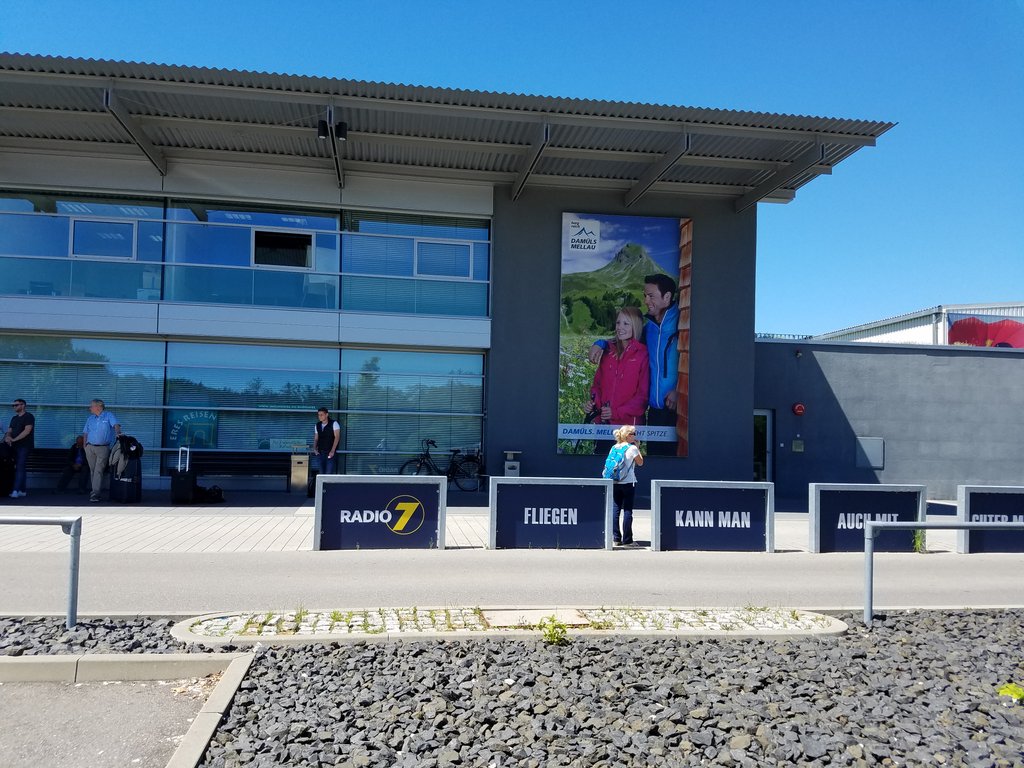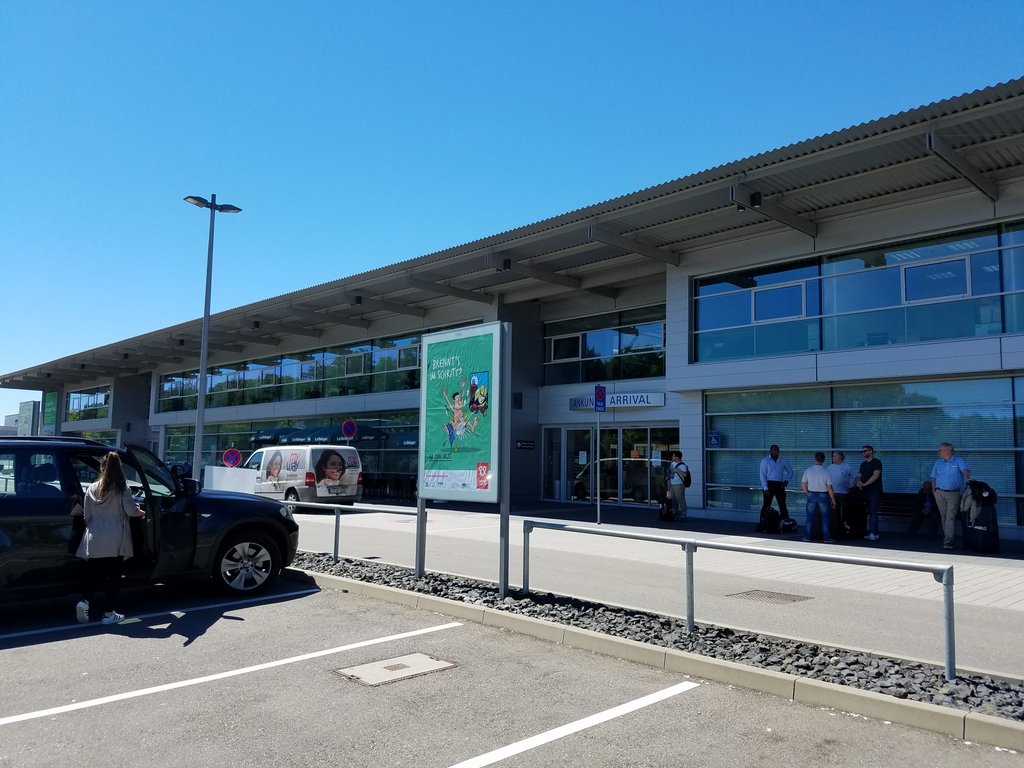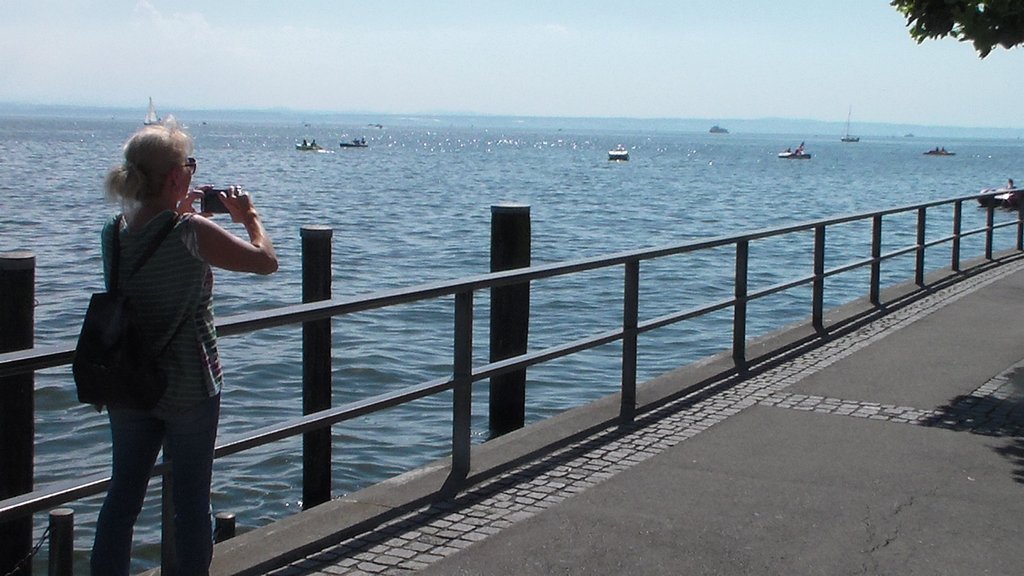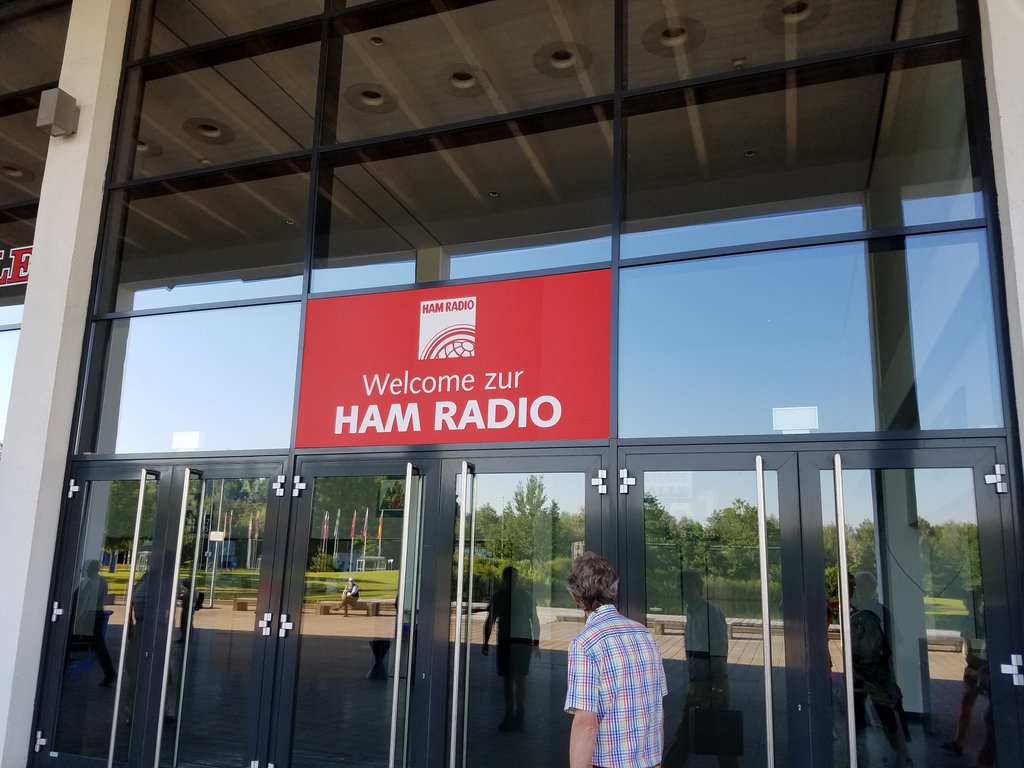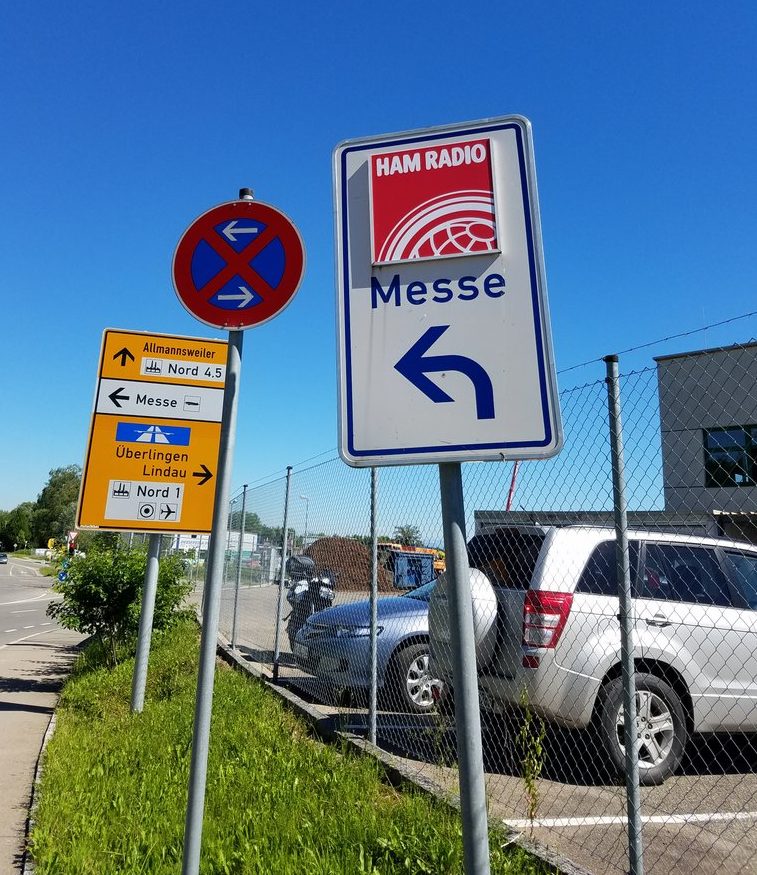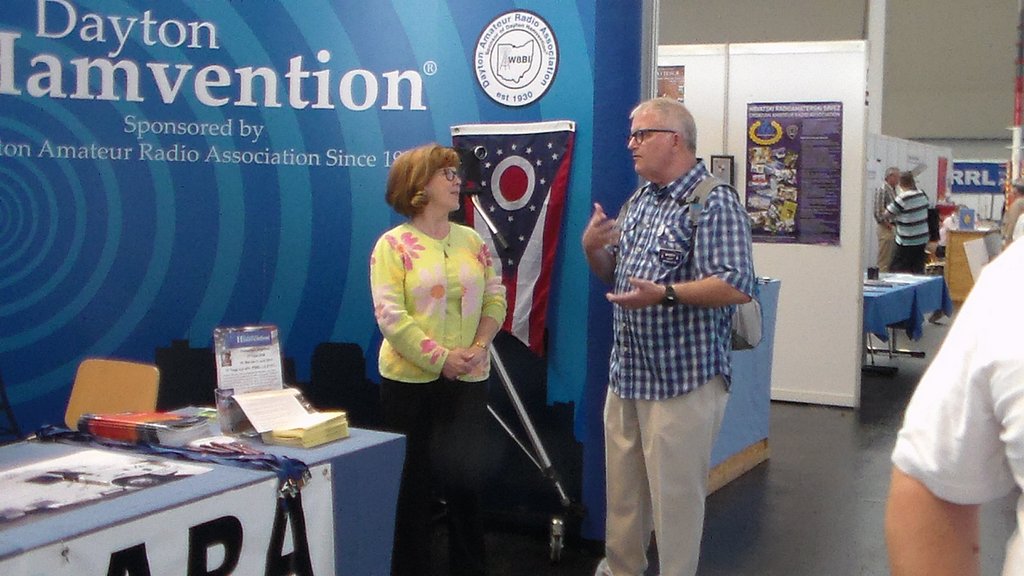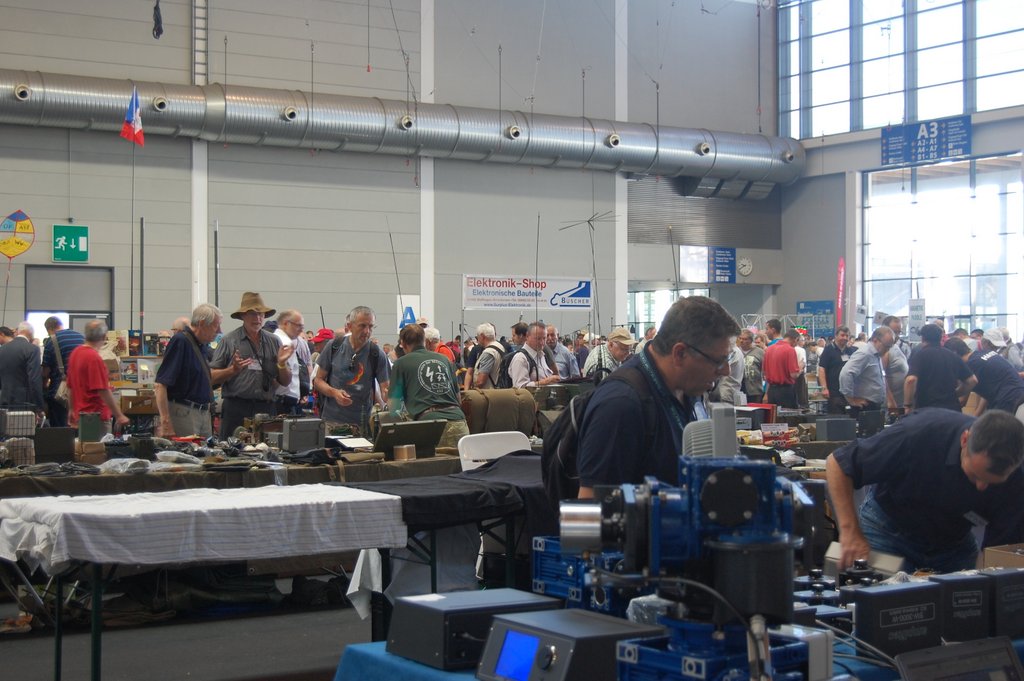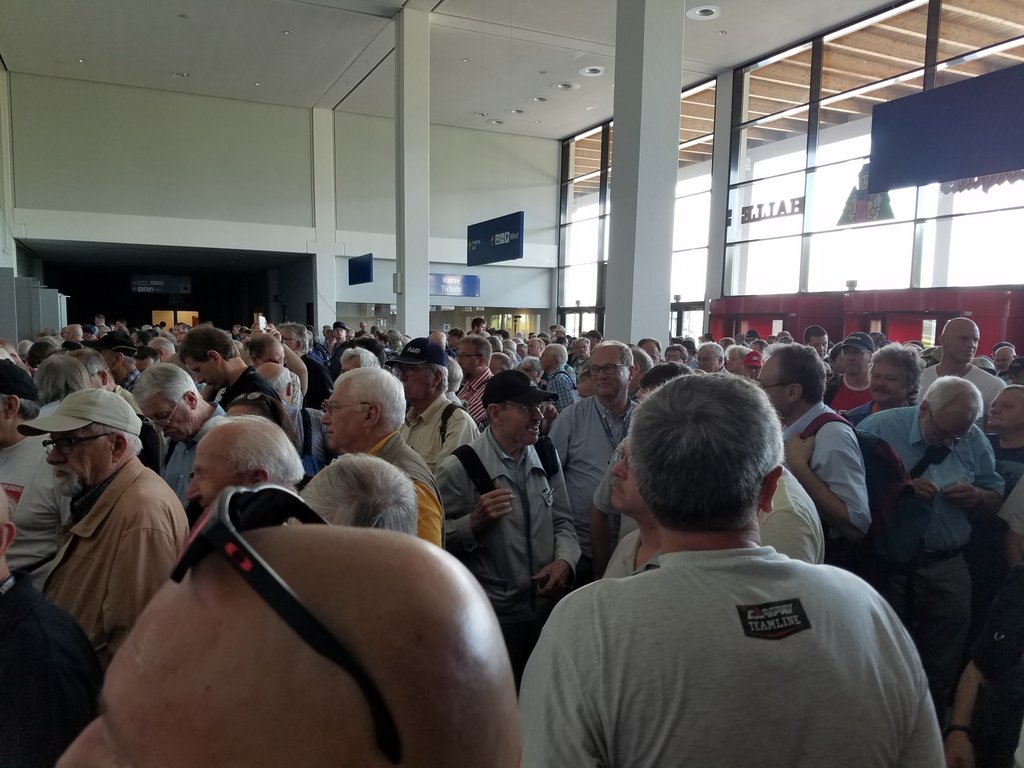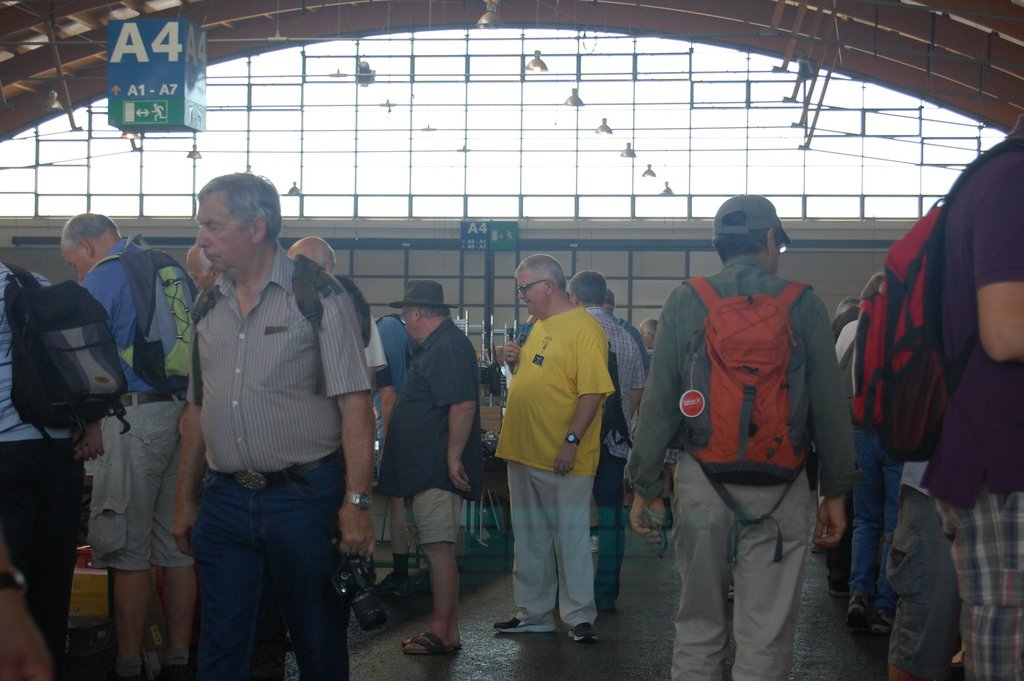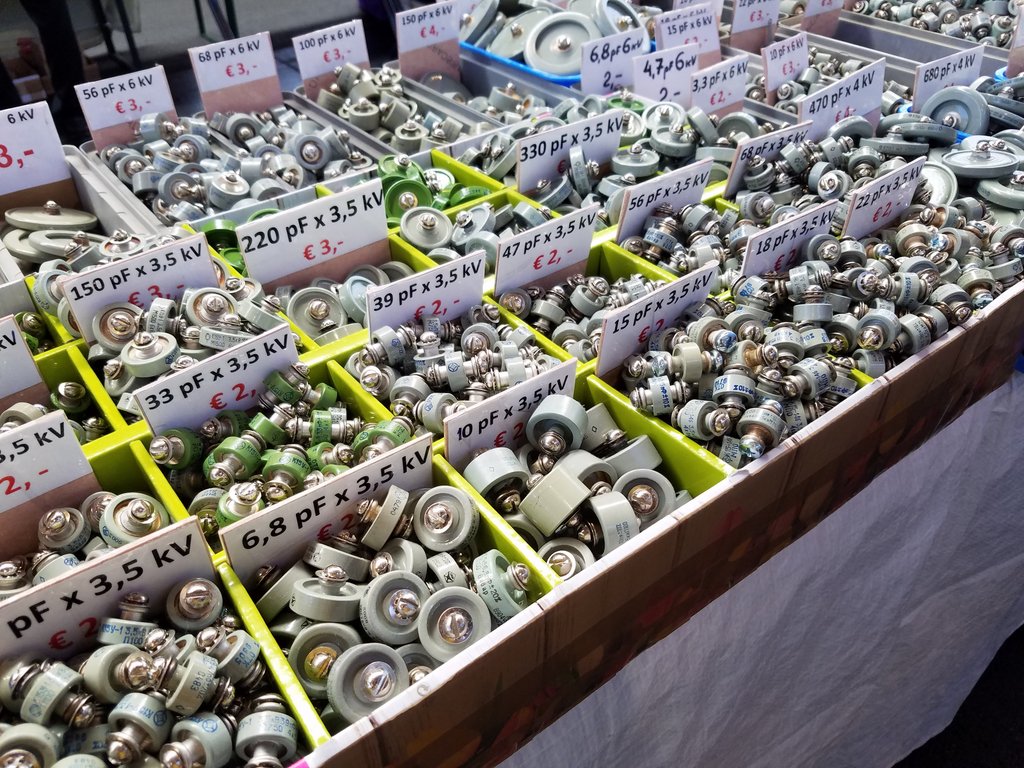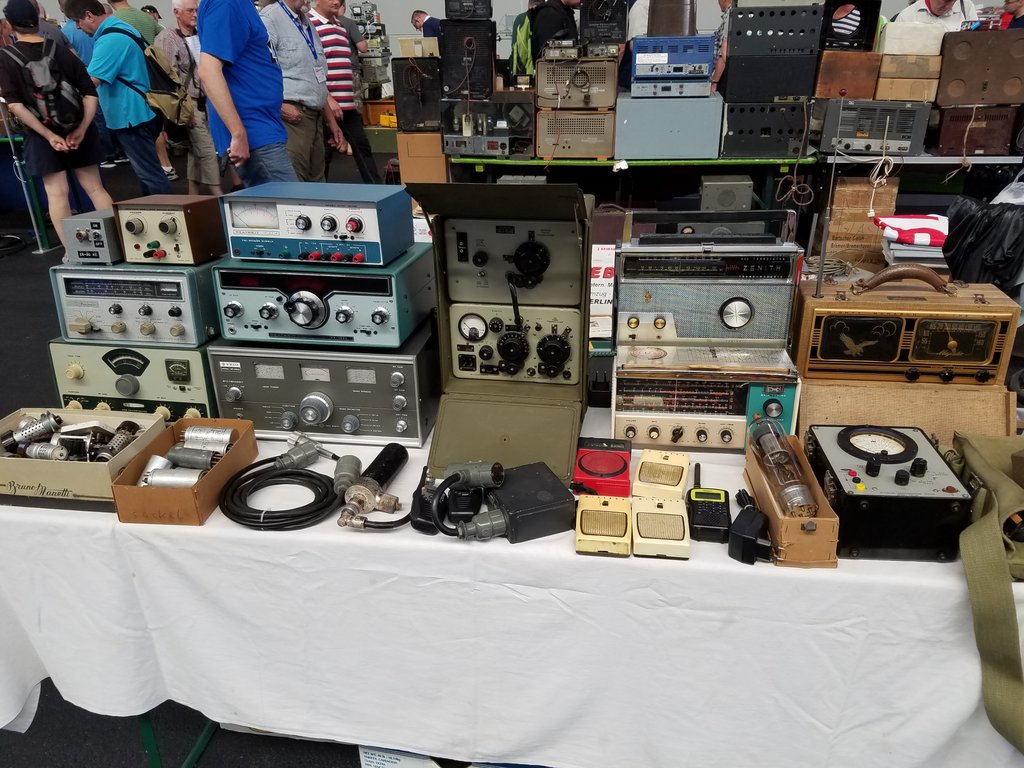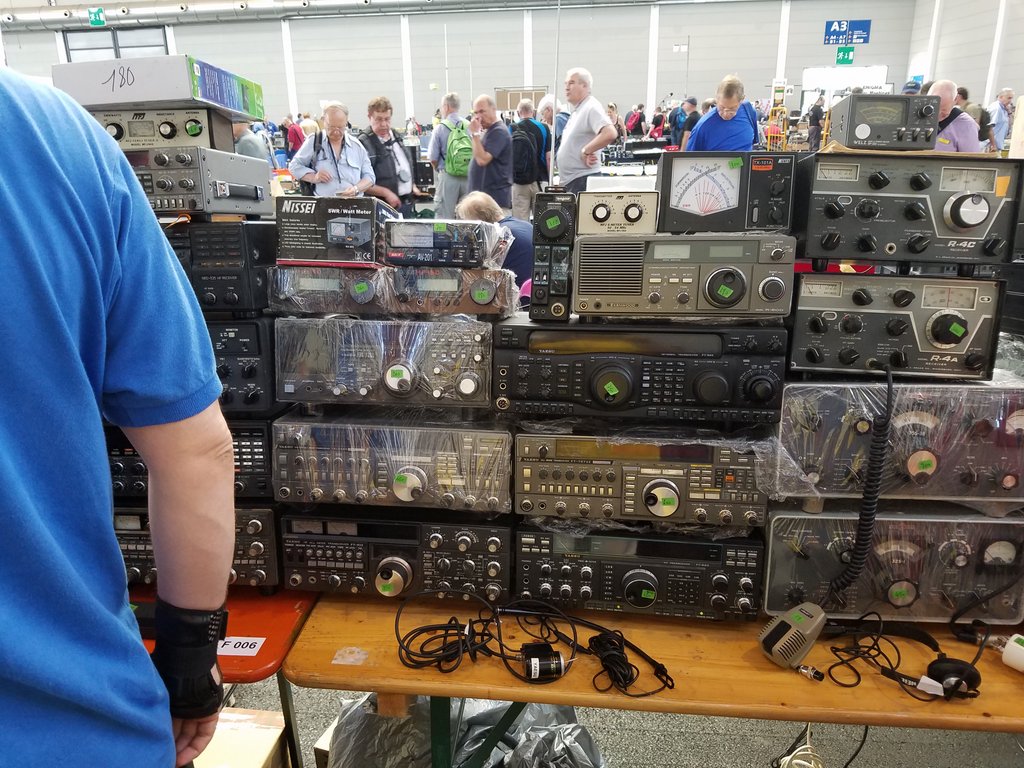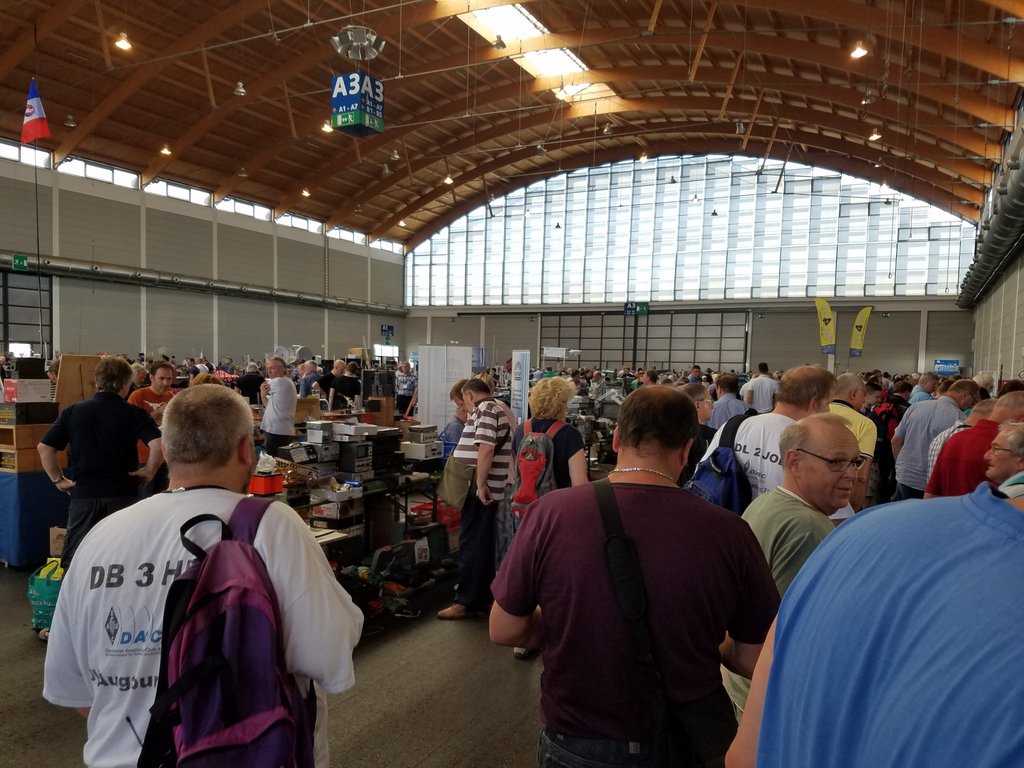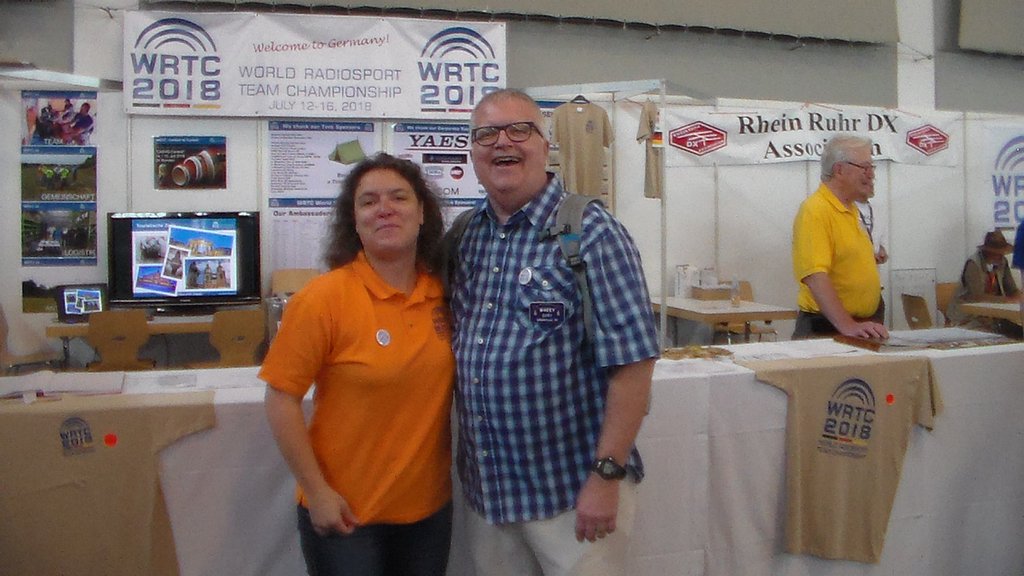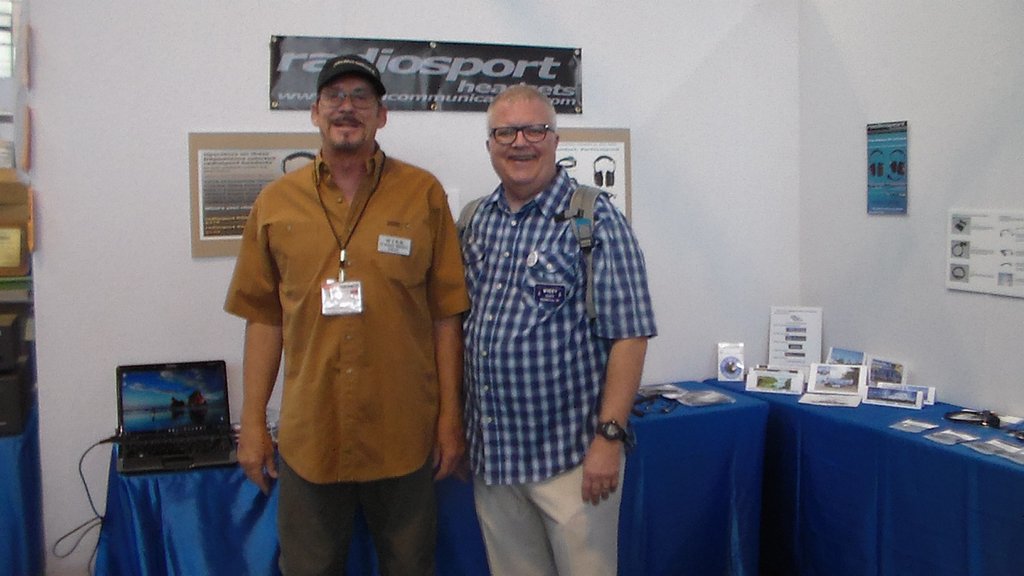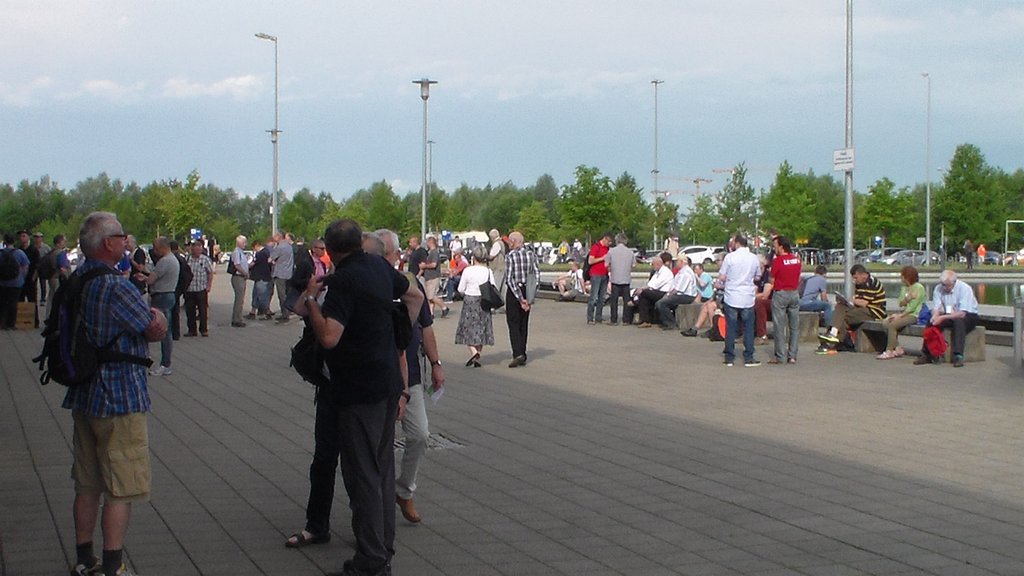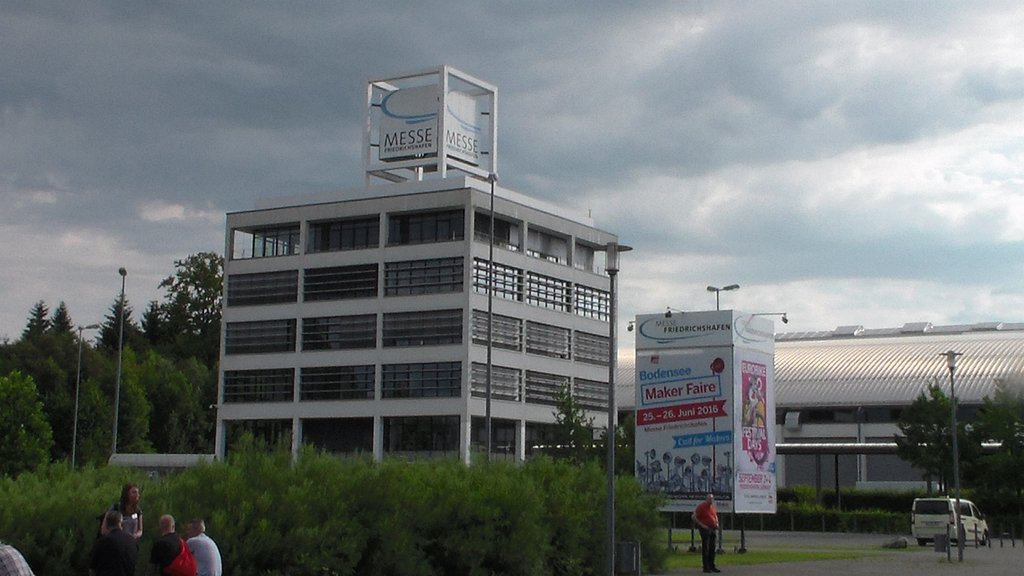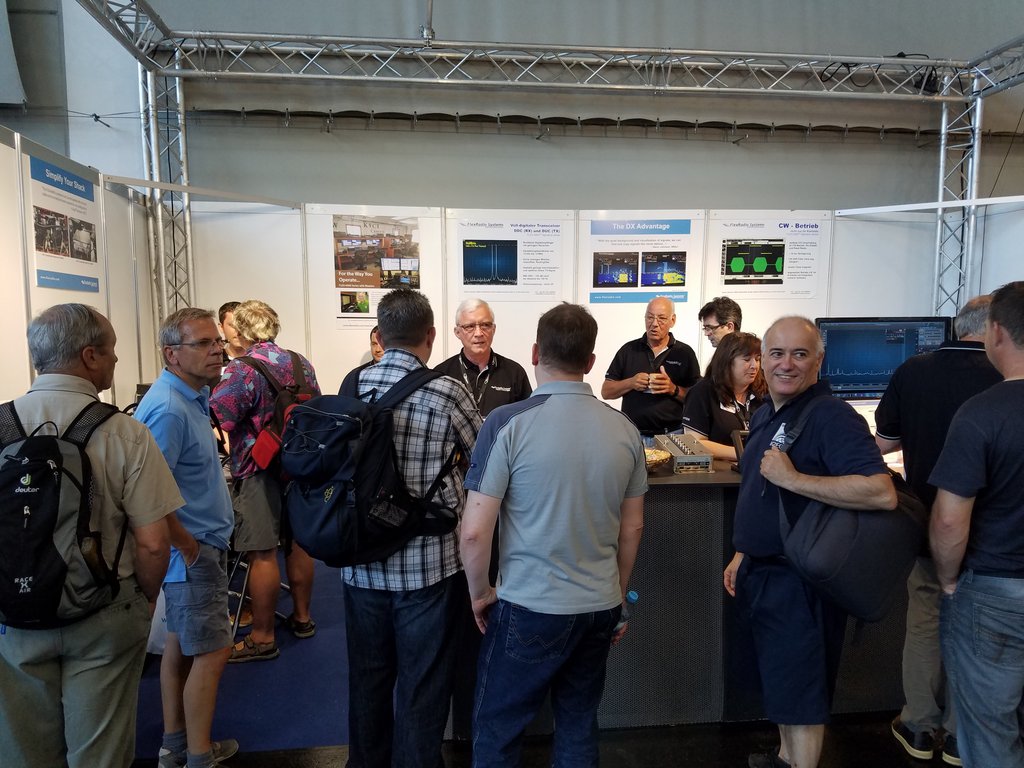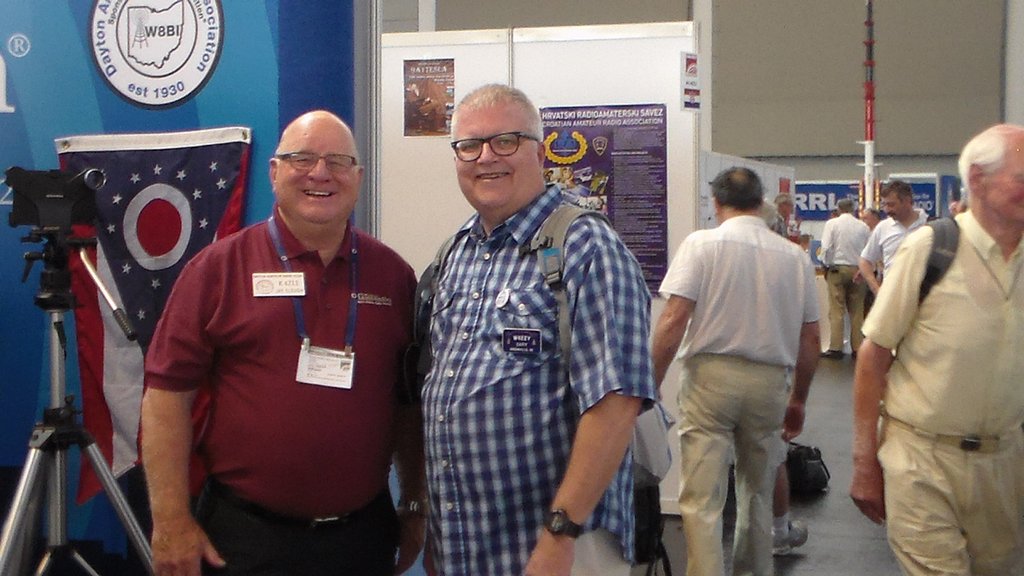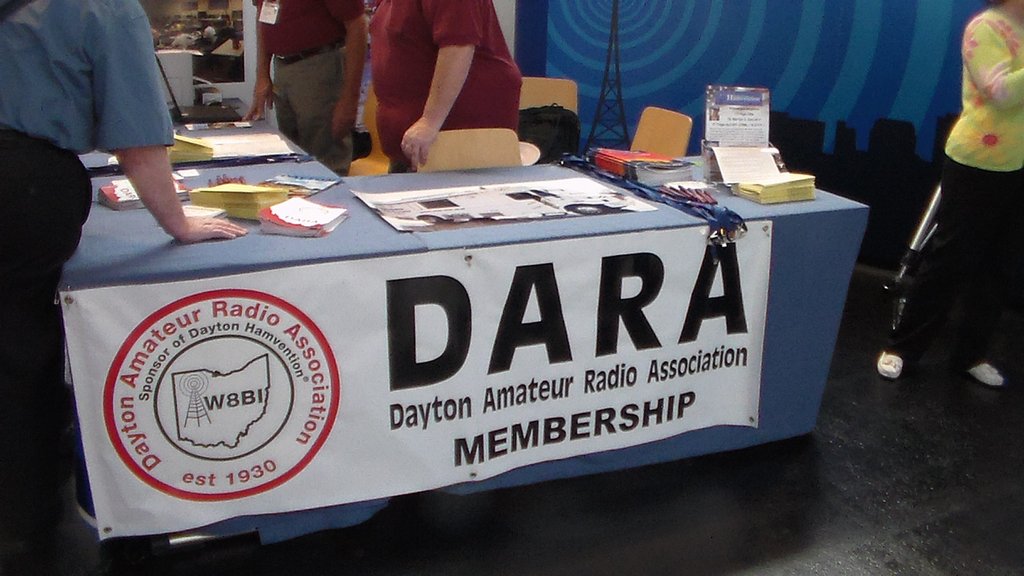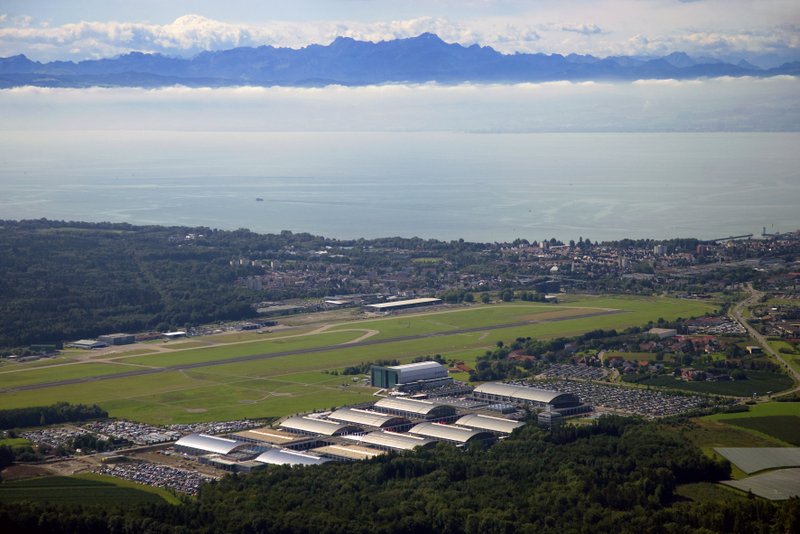The first booth I visited was of Dokufunk (http://www.dokufunk.org/). They collect QSLs and other information about wireless history for scientific evaluation. Its head Wolf, OE1WHC, was a moderator for the Austrian shortwave service which does not exist anymore. But ORF still supports Dokufunk. They have a large archive and even the equipment to digitize large quantities if information. I brought them a package of ham radio periodicals, mostly issues of DL-QTC, the predecessor of cqDL, and got some QSPs (magazine of OEVSV) back. I collect those periodicals to gain and provide access. Seehttp://www.dl4no.de/thema/amateurfunk-zeitschriftenarchiv.htm, catalog at the bottom.
The flea market filled three exhibit halls. If you needed a tube heating for your shack you had a wide choice, from radios to ham equipment to scopes. On the newer side you could get Windows XP packages with the appropriate hardware.
Flea Market Photos Courtesy of Ham Radio Friedrichshafen
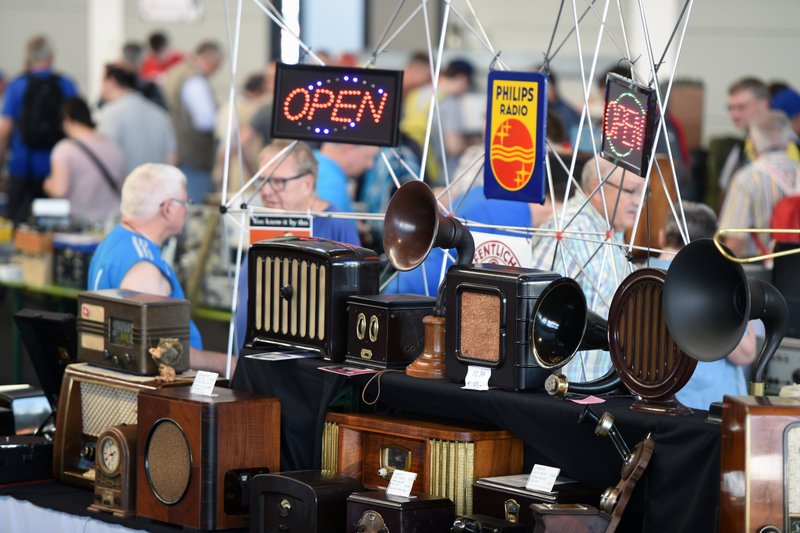
A3: Stand mit historischem Radiogeräten
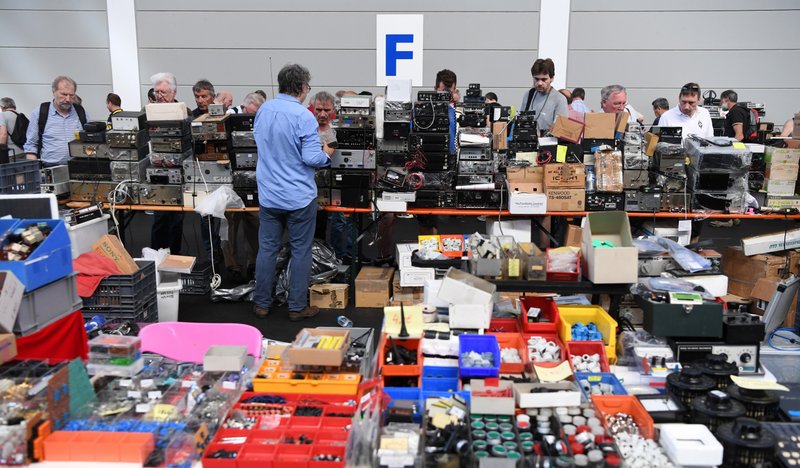
A3: Stand mit Empfängern und Messgeräten (Photo: Ham Radio Friedrichshafen)
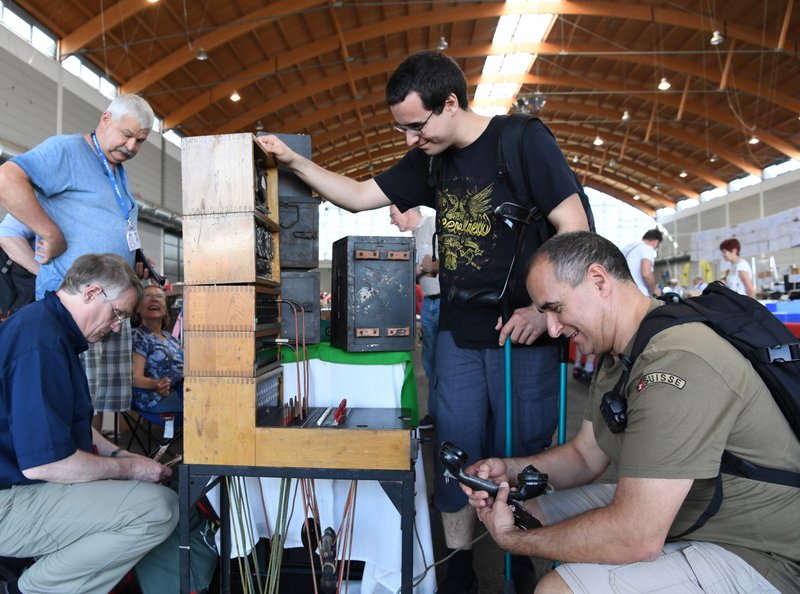
A3: Stand mit Empfängern und Messgeräten, hier zwei Schweizer an einer historischen Feld-Telefonzentrale (Photo: Ham Radio Friedrichshafen)
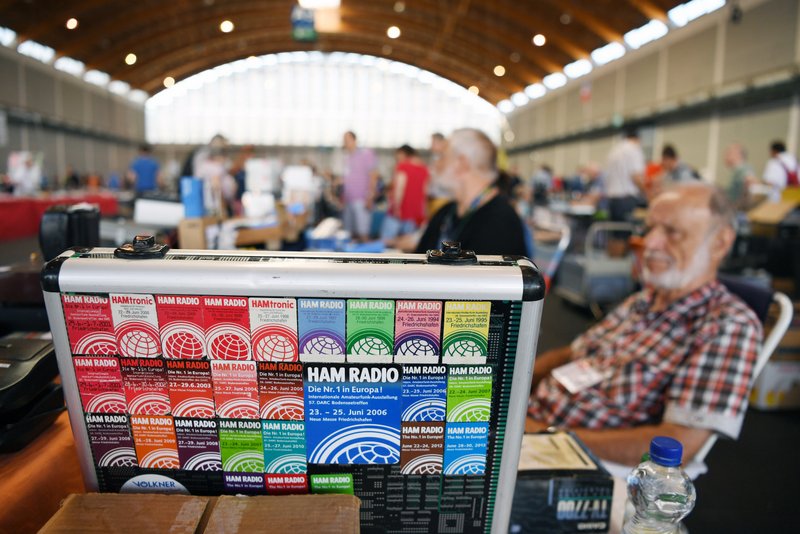
A3: Koffer mit Ham-Radio-Aufklebern aus mehreren Jahrzehnten (Photo: Ham Radio Friedrichshafen)
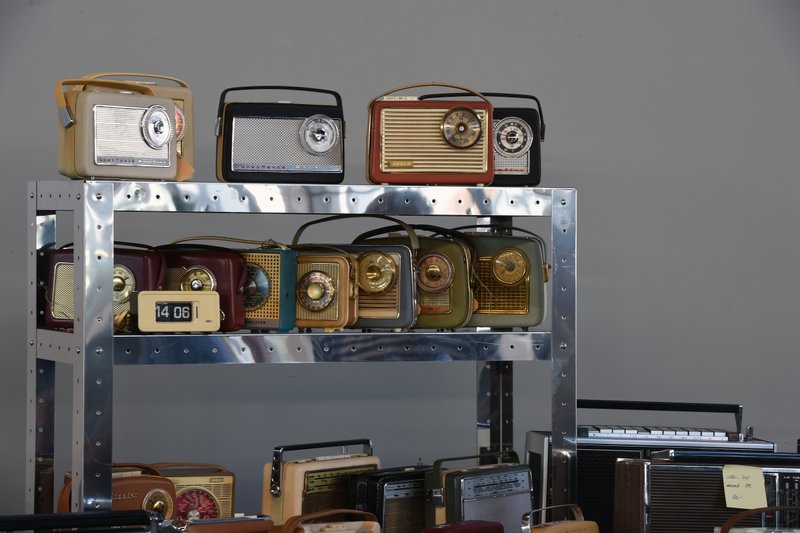
A3: Alte Radiogeräte (Photo: Ham Radio Friedrichshafen)
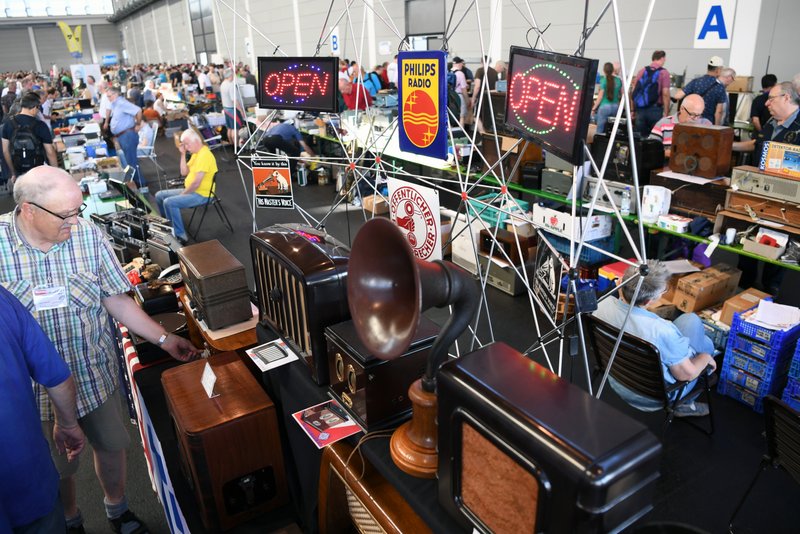
A3: Alte Empfänger und Radios (Photo: Ham Radio Friedrichshafen)
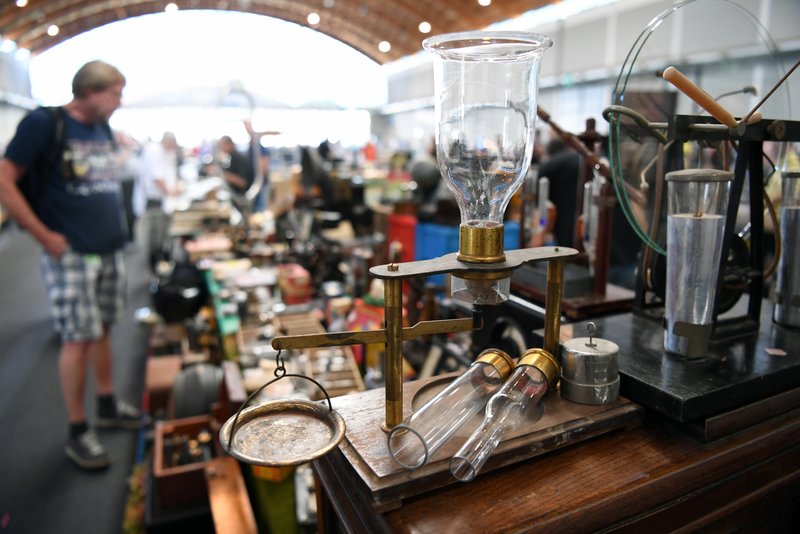
A3: Stand mit Empfängern und Messgeräten (Photo: Ham Radio Friedrichshafen)
Yaesu, Icom & Co where there, of course. A large part of Hall 1 had booths for most of the European ham radio societies and other entities. Several attractions for the youths were there: A fox hunt around the hall, possibilities to solder simple circuits and more. The exhibit center even provides a kindergarden.
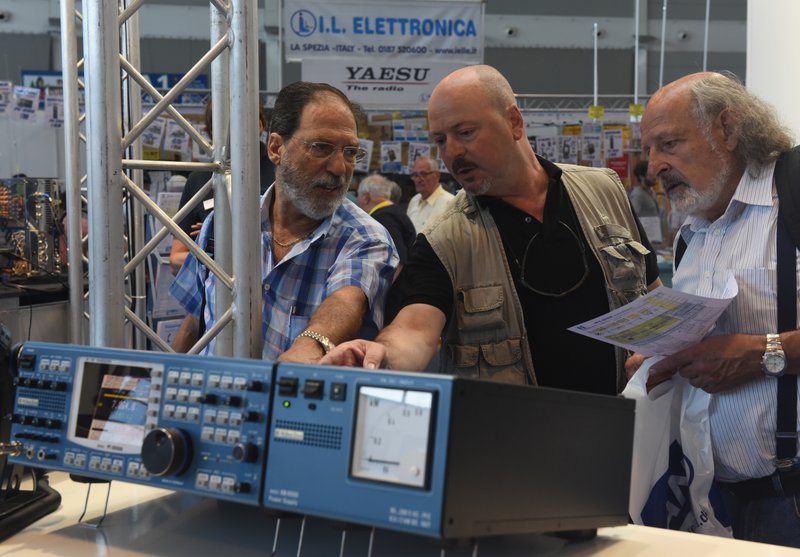
A1: Hilberling PT 8000A (Photo: Ham Radio Friedrichshafen)
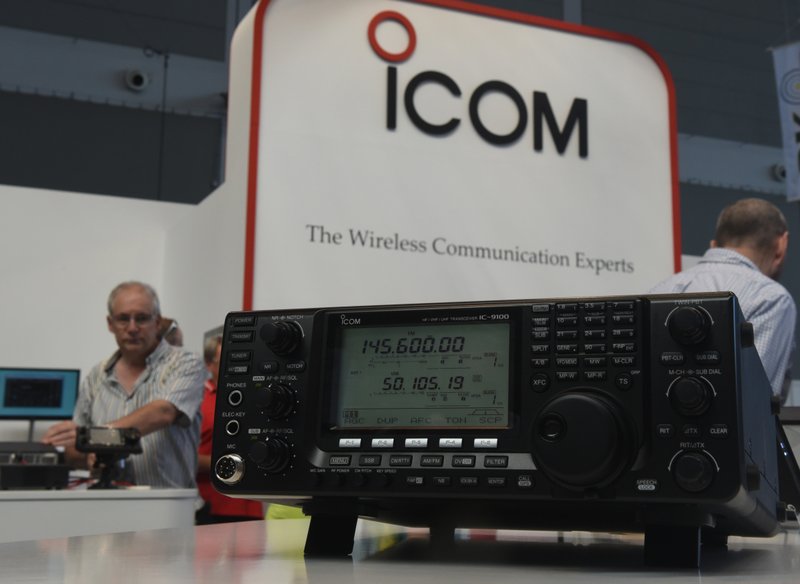
A1: ICOM (Photo: Ham Radio Friedrichshafen)
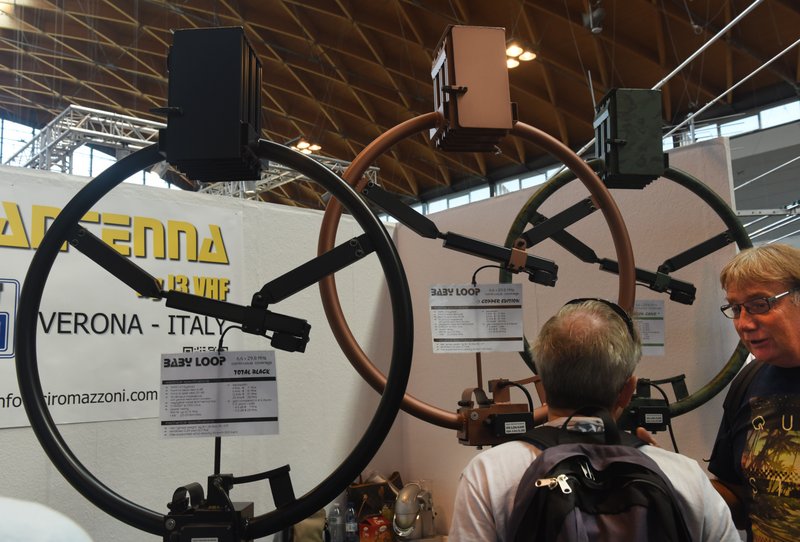
A1: Wimo, BABY Loop (Photo: Ham Radio Friedrichshafen)
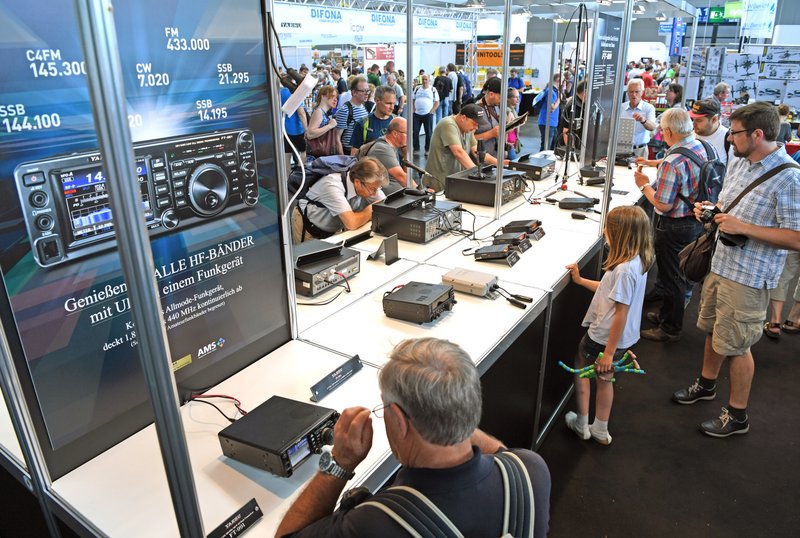
A1: YAESU Funkgeräte (Photo: Ham Radio Friedrichshafen)
Hamradio had lots of presentations. The “SDR Academy” run all over Saturday – completely in English. See http://www.sdra-2016.de. Last year’s presentations are on Youtube. Search for “SDRA-2015”.
My presentation was titled “HAMNET On 70 cm – Possibilities and Limitations”. I should explain that HAMNET is our way to use the 44.0.0.0/8 TCP address space reserved for Ham Radio use. Starting in Germany and especially Austria we use more or less standard WLAN equipment to build a ham radio intranet. User access is mostly on 2.3 GHz and links on 5 GHz. Where we have gaps in the wireless coverage we use Internet wormholes. This way you can access for example packet radio sites in Canada. See http://hamnetdb.net.
2,3 GHz and up means exclusively line-of sight connections. Quite some OMs cannot reach access points this way. The only alternative up to now has been VPN connections through the Internet. I think we could provide relatively fast access on 70 cm. Here in Germany we have two 200-kHz channels for such uses. They were defined in the 1980s for packet radio access up to 76 kbps. This technology is next to dead.
Theoretical calculations show that we could provide up to 1 Mbps and cover up to 50 km if we use modern modulation schemes. You could even improve throughput by making TCP/IP less gossipy. I proposed to use SDR blocks like HackRF or LimeSDR and combine them with a RF frontend (filter, preamp, PA, fast switching). The hardware is more or less readily available, but this is mostly a software topic. While HAMNET relies on standard WLAN equipment with all its limitations for ham radio usage, this system could be completely open. We could it adapt to all our needs and ideas. In the end we could port it back to the microwave bands.
Even if we only work on the lowest protocol levels this will pose quite some challenges. We would need programmers with quite varied expertise from TCP/IP protocols to SDR technology. My presentation was to attract such people. Personally I will not program anything. As a technical writer with a quite wide expertise I might be a bracket for the project and write documentation for it.
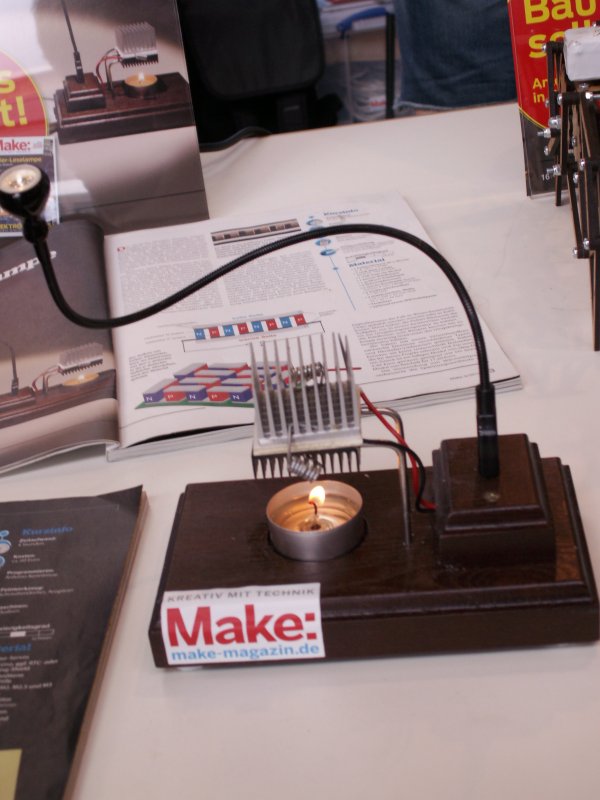
A “Peltier Lamp”: The candle heats one side of the Peltier element while the other is cooled by the heat sink. This produces enough electricity to light a LED. (Photo: Alexander DL4NO)
At the opposite end of the exhibit center another fair went on, called Maker Faire. In former times you would have called it “make it yourself”. The exhibits there went from computer modding to 3D printing, knitting and also ham radio. For this I modified my presentation a bit: “WLAN Below 1 GHz – Do You Want To Program For It?” The technology I talked about is near hot topics like Internet of Things or traffic telematics.
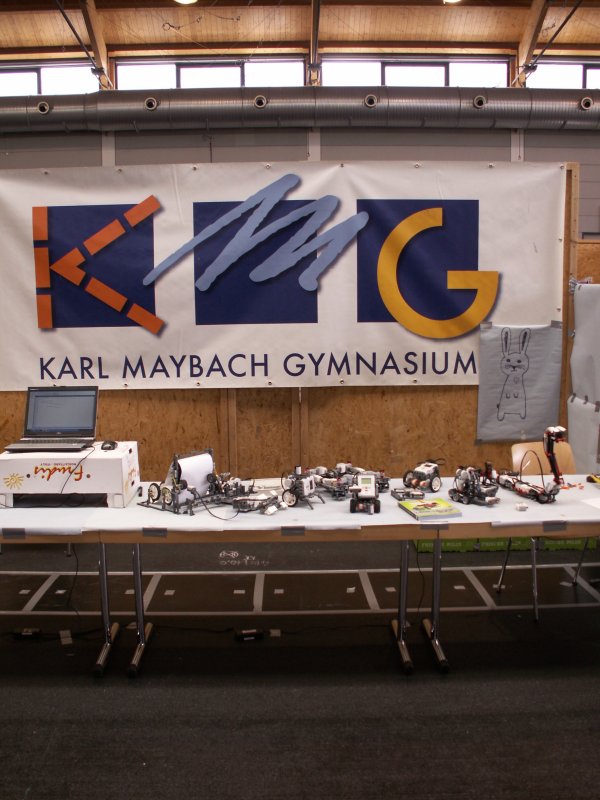
Booth of a high school showing the robots they built. (Photo: Alexander DL4NO)
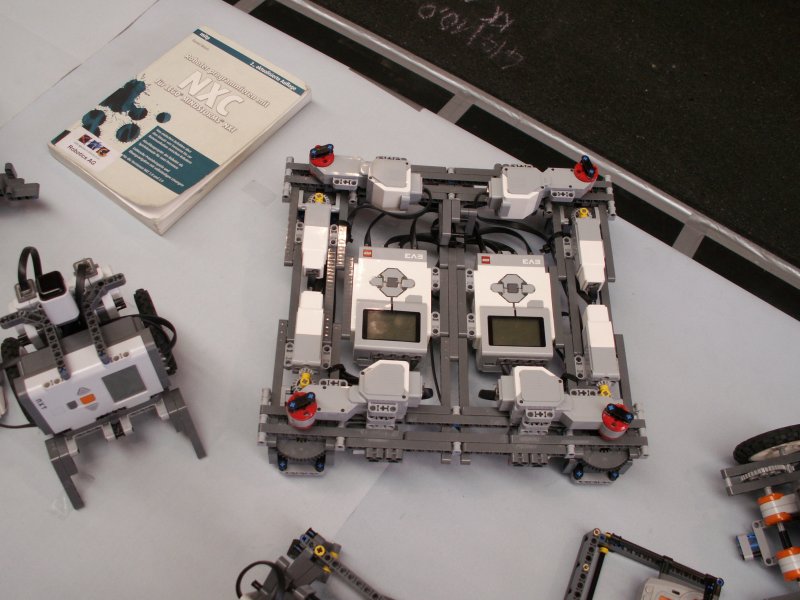
Booth of a high school showing the robots they built. (Photo: Alexander DL4NO)
vy 73
Alexander
DL4NO
Thanks so much for sharing your notes from Friedrichshafen, Alexander. I look forward to attending one year myself! I’m fascinated with the fact that the bulk of the event is indoors–what an incredible venue.
